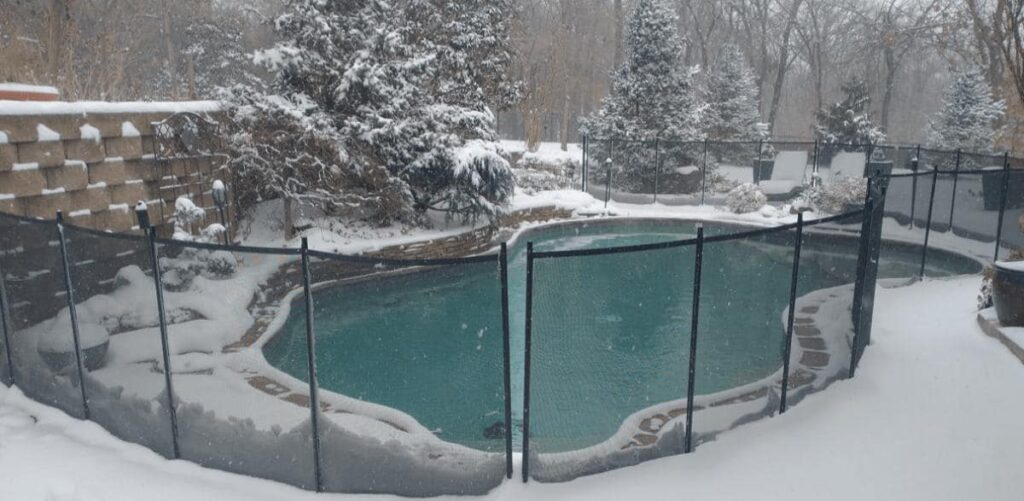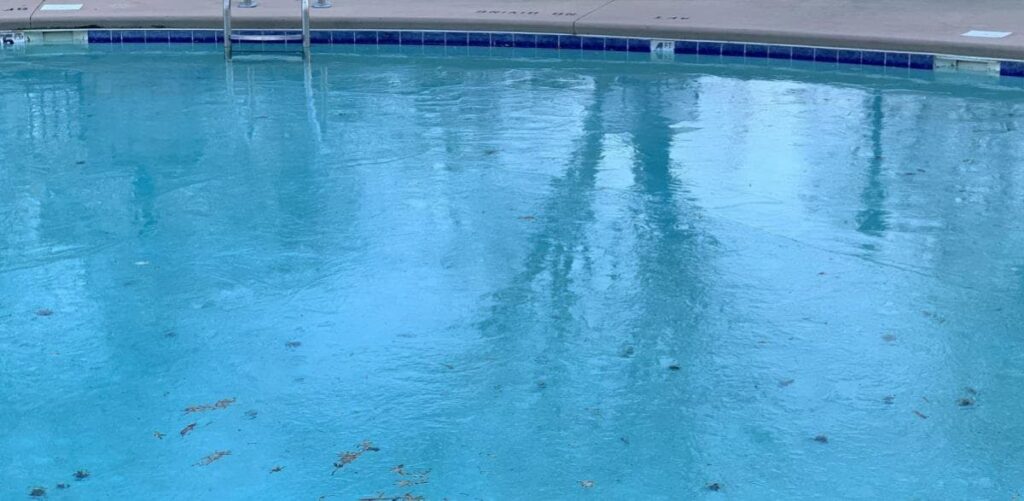Not every pool owner needs to close their pool for the winter. Some areas, especially in the south, have summer weather year-round.
However, within the last few years, unprecedented and historic freezes have hit areas not used to cold temperatures.
These freezes have caught many homeowners off guard, causing severe water damage due to frozen pipes exploding in their homes. Many pools reach the same fate.
Unfortunately, a lot of pool owners are not used to freezing temperatures and may not know how to maintain their pools when temperatures drop over a long period of time.
Cold weather may send some pool owners scrambling to find information. Most of the time, it is too late; pumps, filters, and pipes are already frozen over.
Here are a few guidelines and tips to survive freezes and minimize pool damage as much as possible.
If You Have Time, Close the Pool Before the Weather Hits
If you know a freeze is coming, the most effective way of protecting your pool is to close and winterize it.
Whether you need to close for a few days or weeks, you should follow the most important aspects of closing: draining the pool and equipment.
Dont Worry About Pool Chemistry
During a freeze, your chemistry readings shouldn’t be a priority. Algae doesn’t grow as fast when the water gets colder.
Do not rush any process to avoid stuff growing in your water. Add some chlorine to raise free chlorine (FC) levels if you want additional insurance.
Keep Water Moving
The most important part of pool maintenance during freezing temperatures is running the pump. Water continuously moving through the pipes is not as susceptible to freezing as water not moving. This also applies to any water features. Waterfalls, spas, or any other accessory should be running.

Most pumps have a pool freeze protection setting or device that automatically turns on when temperatures hit a certain degree, typically right before freezing (33 – 35 degrees Fahrenheit). I would recommend overriding this and just having it run manually for peace of mind.
Keep the pump running as long as you continue to have electricity and power!
If Power is Lost, Turn Off and Drain the Pool Equipment
If you lose power during a freeze, it’s best to turn off the switches and breakers to your pool equipment. Even with no power, the supply should be off to prevent it from turning back on and potentially causing more damage.
At this point, the goal will be to drain as much water out of the equipment as possible. Open the air relief valve on your pool filter, remove drain plugs from the pumps and filters, and drain any salt cells or chlorinators in your system.
When water freezes, it expands. That is what causes the most damage to pool pipes and equipment. Draining as much water as possible can prevent the expansion from bursting that equipment.
To help further protect your pool pad, throw some tarps or some covering over them. This can at least help prevent ice from forming directly onto equipment.
Do Not Force Anything!
If the pipes and your pool are already frozen, do not try to force anything open.
By doing so, you might be creating even more problems and headaches down the line. Let ice melt naturally, and ride it out as much as possible.
Water and Pool Pump is Frozen
When you see a layer of ice in the pool and on the equipment, smashing it with a mallet or hammer may seem tempting. This is not a good idea and could make things worse!

Broken chunks of ice can be very sharp. If you have a vinyl liner, these chunks can easily tear or rip a hole in the liner.
It’s best not to disturb any ice that forms.
Thawing Frozen Pool Pipes and Equipment
By now, it may seem like a broken record. However, don’t try to thaw or heat frozen pool pipes. Water contraction and expansion are what causes damage and cracking, so changing the water’s temperature rapidly can make things worse as it freezes again.
So, please don’t go and dump hot water on pipes to heat them!
Wait For Warmer Weather and Prepare for Additional Outages
As with any storm that causes power outages over a prolonged period, there is a pretty decent chance power will go in and out. It’s best to wait a day or two before turning the pump back on.
This gives extra time for the weather to warm up and for you to inspect the entire pool area
Inspect Equipment and Prepare for Leaks
If there is one positive of being in this situation, it will allow you to thoroughly check your pool for cracks, leaks, and other damage. You aren’t swimming, so might as well do some maintenance work!
Check your pool skimmers, PVC piping, pool structure, and other common areas where leaks can occur. If the pool is losing water, there is a fairly high chance that it’s a leak.
If you find any leak, it should be taken care of before even thinking about firing the pool back up to swimmable conditions.
Starting Up The Pool Again
Once the weather has passed and the ice has melted, it’s time to get that pool back up and running!
At this point, it’s almost like treating this as a soft pool opening. Fill the pool to the designated waterline, reattach the filter plugs, and start up the system.
Once you are up and running, now is the time to think about chemistry. Test the water and use the necessary chemicals to get your water balanced.
Always Be Prepared
It is normal for pool owners in the South to not having to think about freezes or a frozen pool. Most of the time, these storms in warm climates are once-in-a-generation anomalies.
However, knowing and understanding how to navigate through winter weather is definitely something that everyone with a pool should know.
Take precautions, be safe, and know that soon enough you will be back to enjoying instead of worrying!
